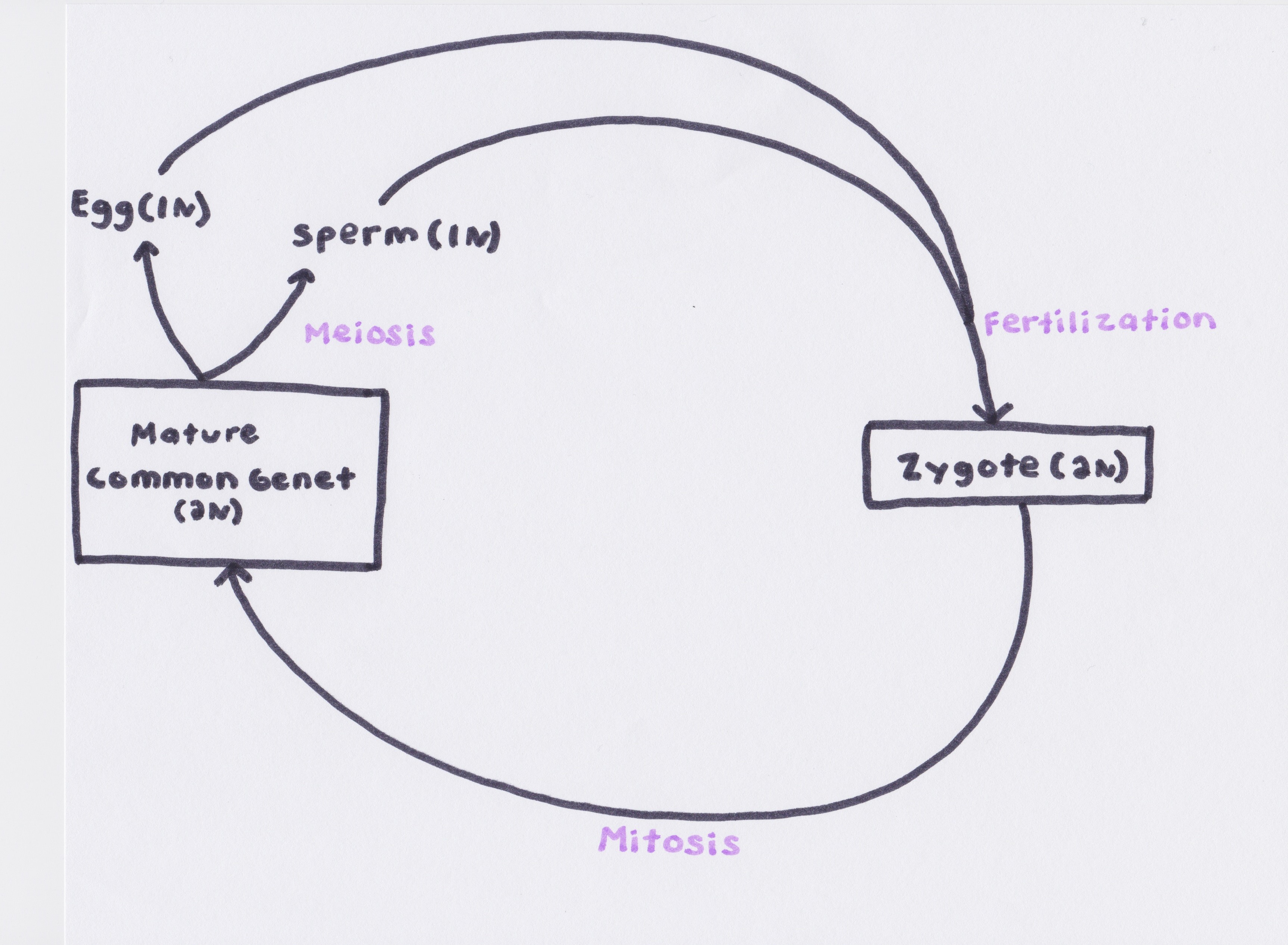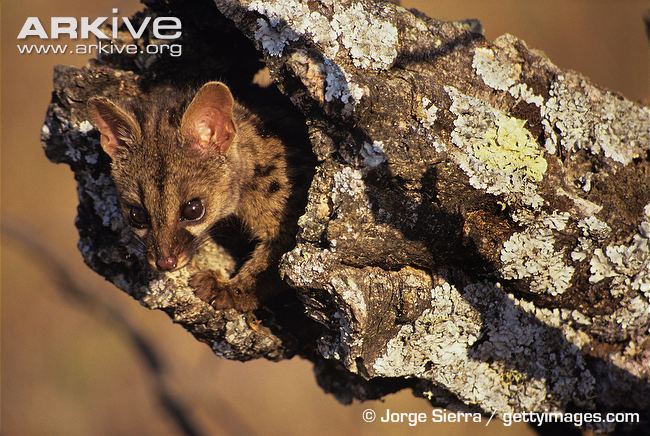Reproduction
The common genet is a mammalian species and has a gametic lifestyle. This means that haploid gamete cells, called egg and sperm, are produced through meiosis. Sexual reproduction occurs when the egg and sperm combine, called fertilization, to form a diploid zygote cell. Since genets are heterosexual organisms, a sperm producing male and egg producing female are required for reproduction to take place.

Figure 1. Simple drawing of the gametic lifecycle. Illustration by Jenna Sturz.
Common genet sexual maturity is around two years (Animal Files, 2006) and usually occurs during the wet season when genet females come into heat (Lunderigan and Conley, 2000). Once a mate is found, copulation occurs, which usually takes around five minutes and is often accompanied by meowing. Once fertilization occurs, the newly formed zygote can begin to grow through mitotic cellular division. The gestation period for the common genet is usually between 70-77 days and concludes with the birth of one to three blind and hairless neonate genets (Kingdon et al., 2013). After about ten days the neonates will open their eyes and four weeks later canine teeth will appear. Once the kittens are about 45 days old they will begin eating meat gradually and become more independent until they can live their own solitary lives (Arkive Oranization, 2013).
Learn more about the gametic lifecycle and other lifecycles here!
Click here to learn about the common genet's interactions with other animals!
